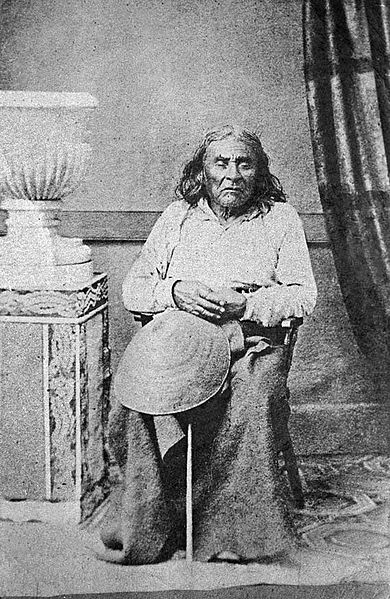
Let us look to the Suquamish and Duwamish tribes in the northwestern regions of our continent. The union of Schweabe (a Suquamish chief) and Scholitza (daughter of a Duwamish chief) was rewarded with their son, Seattle, who also became a chief.[1] Traditionally, descent followed the mother’s line; so Seattle belongs to the Duwamish.
Among the native people of Puget Sound, there were no hereditary chieftains. Members of the tribe were elevated by virtue of their words, wisdom and actions whether in times of peace or of crisis. Seattle’s honor came to him for the latter.
Why was Seattle’s name adopted by the settlers of a town that would become one of the largest and most important cities in the land?
Prominent founder Doc Maynard[2] and Chief Seattle forged an alliance. Maynard treated and cared for natives which riled some other settlers. Seattle kept his people from joining the 1856 Native American raids on the white settlers. For this, Maynard convinced his detractors to name the town after the Duwamish chief. Doc Maynard always stood for the rights of his native friends. And Seattle spoke eloquently for the sanctity of Earth, nature and for his people.
Of the white man, Chief Seattle had this to say, “Now by this we make friends and put away all bad feelings if we ever had any. We are friends of the Americans.” [3]
Seattle’s oldest daughter Kikisoblu was called Princess Angeline by the settlers.[4] Yet, she lived out her days in a shack in Seattle where she earned keep by digging clams—and where she was discovered by photographer Edward S. Curtis.[5]
With Chief Seattle’s name immortalized, we hope his wisdom will be eternal, too, in our world—and in that of our grandchildren—and for seven-generations yet to come.
I’d say we have plenty to do. But, isn’t in nice to have important things for us to work on.
Image: Only known photograph of Chief Seattle (c. 1786-1866)[6]
[1] See: http://www.chiefseattle.com/history/chiefseattle/chief.htm
[2] See: http://www.historylink.org/index.cfm?DisplayPage=output.cfm&file_id=315
[3] See: http://www.chiefseattle.com/history/chiefseattle/speech/speech2.htm and http://www.chiefseattle.com/history/chiefseattle/speech/speech.htm Authenticity of this speech is not documented as it was transcribed years afterward by a man who did not speak Salish.
[4] See: http://www.chiefseattle.com/history/chiefseattle/angeline.htm
[5] See: http://curtis.library.northwestern.edu/
[6] Public Domain tag: http://commons.wikimedia.org/wiki/File:Chief_seattle.jpg – copyright has expired